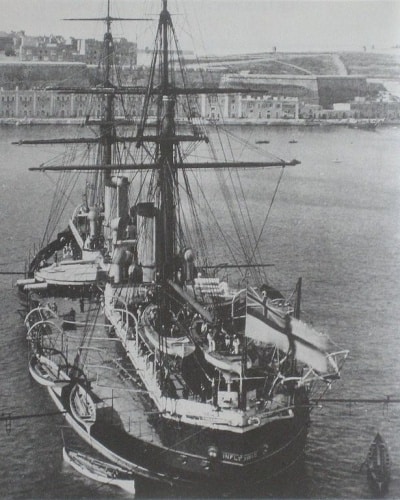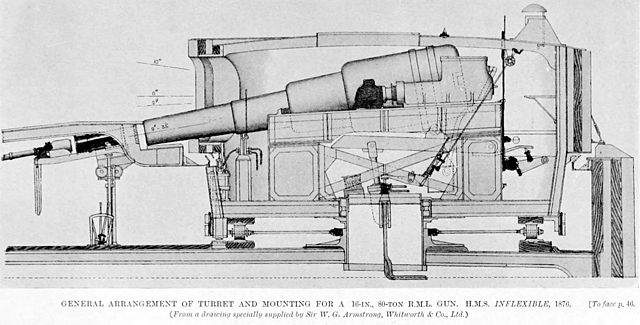These days, lightweighting is all the rage, and superlatives are most often ascribed to miniaturisation; the smallest computers, the most power in the lightest battery. But this wasn’t always the case: to our Victorian forebears, bigger was most definitely better.
As a case in point, this report from Woolwich Dockyards makes interesting reading, as our predecessors seem open-mouthed in amazement at a colossal piece of firepower: an 81-ton gun, destined for one of the Royal Navy’s new fleet of ironclads, HMS Inflexible. Ironclads were the spearhead of the arms race of the day: immense warships, housing heavily armoured ‘citadels’ in their centres and carrying the largest guns that could be made at the time.

The 81-tonner was indeed large. The Engineer notes that only two years previously, the largest gun yet made weighed 35 tons, and had been nicknamed ‘The Woolwich Infant’; it was ironic, the report says, that the new weapon did indeed make this one look child-sized. The 81-tonner was 27 feet long and was made with a 14-inch calibre; but the metal of the barrel was so thick that the calibre was increased to 16in to accommodate the rifling needed to stabilise the flight of its shells, which the article estimates would weigh some 1200lb. This would be fired 450 pounds of gunpowder with a muzzle velocity of 1300 ft per second, imparting enough energy to penetrate 23in of forged-iron armour plate at 1000 yards.
The Inflexible was intended to counter new Italian warships which threatened British bases in the Mediterranean. It was equipped with four 81-ton guns, which were so big they could not be reloaded from within their turrets; instead, a muzzle-loading device equipped with hydraulic rams was mounted on the deck, which were forced inside the barrel twice, firstly to extinguish burning material, and secondly to push the shell and its gunpowder charge into the gun; this operation took four minutes. The guns saw action with Inflexible at the bombardment of Alexandria in 1882, when they fired 88 shells.

Inflexible was a pioneer in other senses too; it was the Navy’s first ship to be completely lit with electricity (and subsequently the first to see a fatal electrocution), and also the first with underwater torpedo tubes. She served for almost 40 years, and was finally scrapped in 1903.




Poll: Should the UK’s railways be renationalised?
I think that a network inclusive of the vehicles on it would make sense. However it remains to be seen if there is any plan for it to be for the...